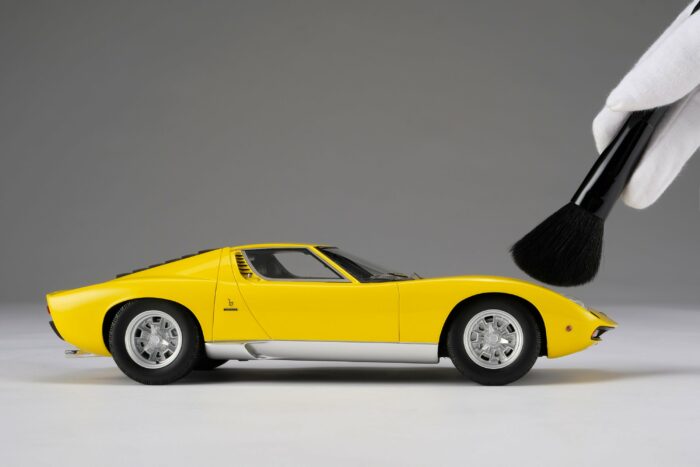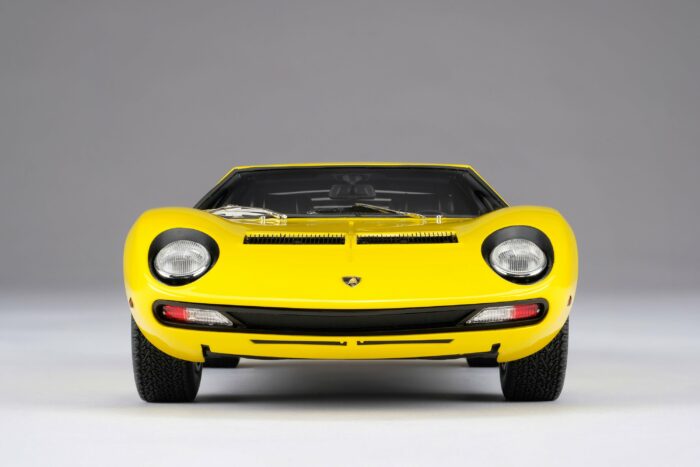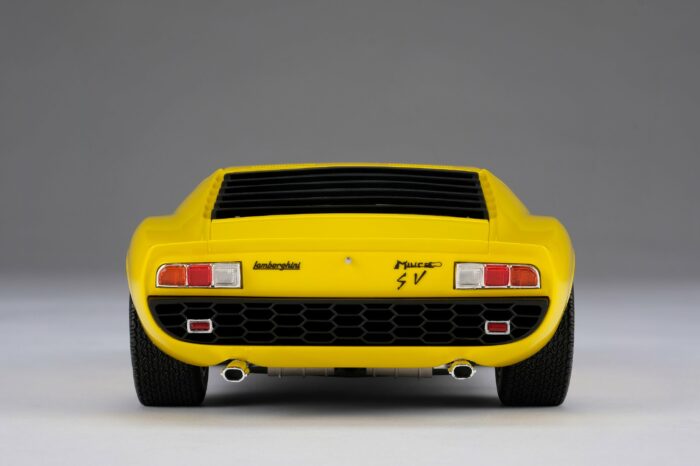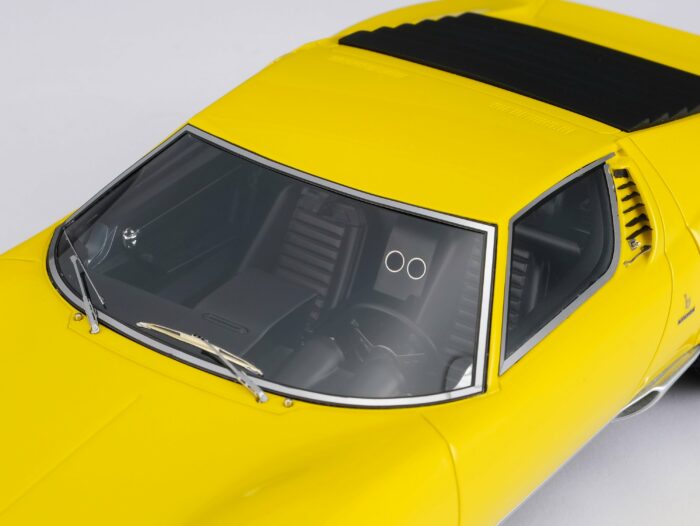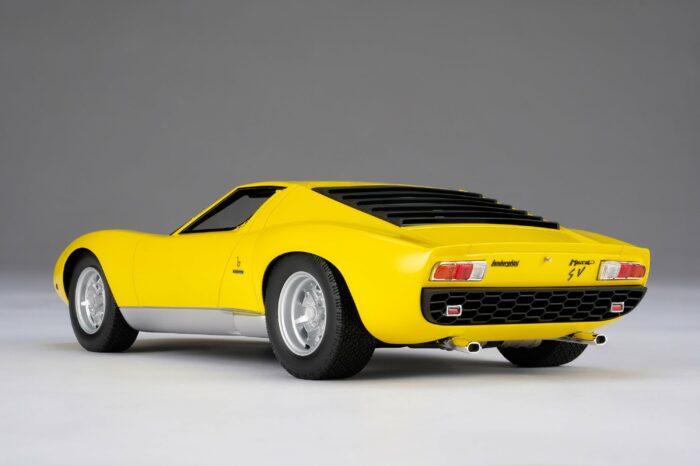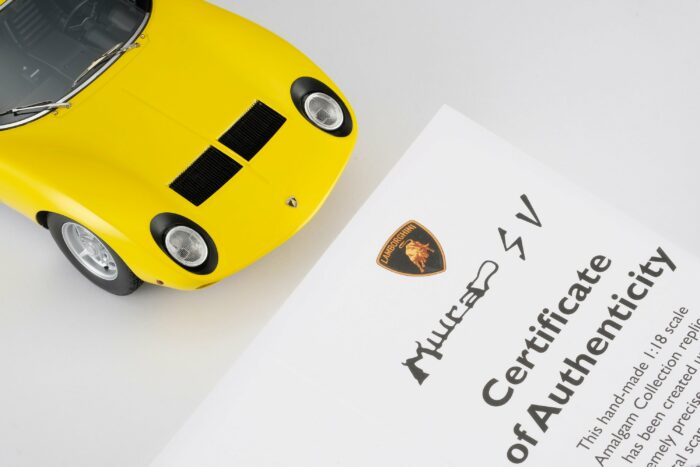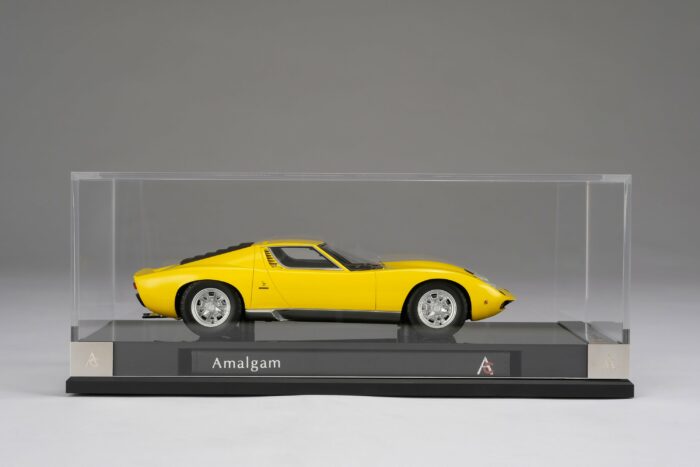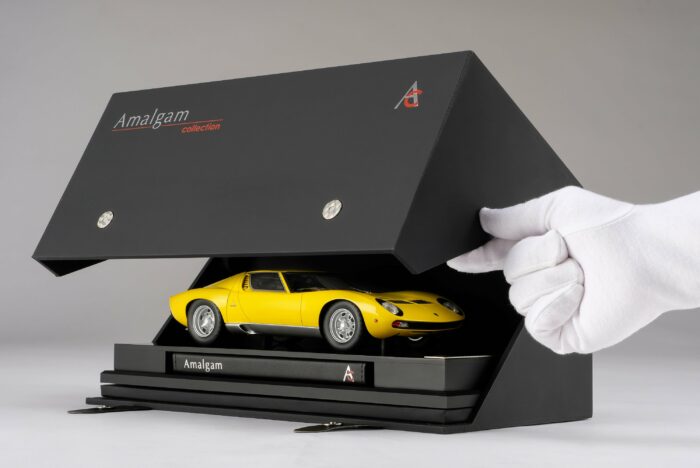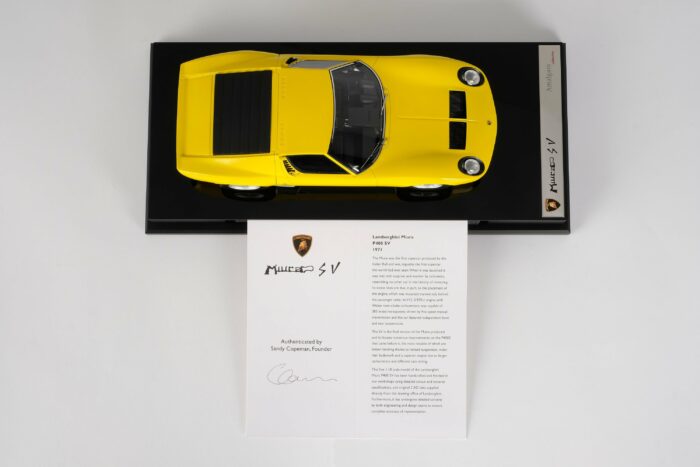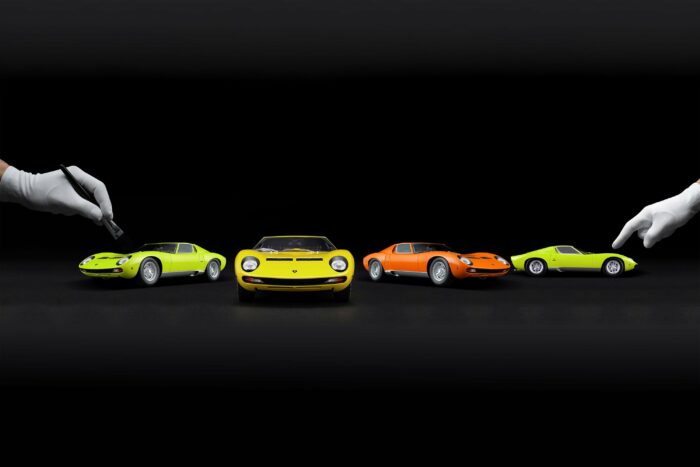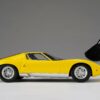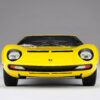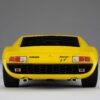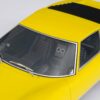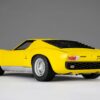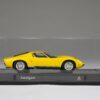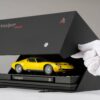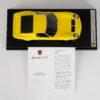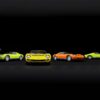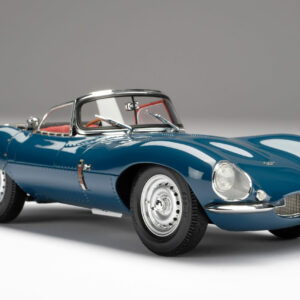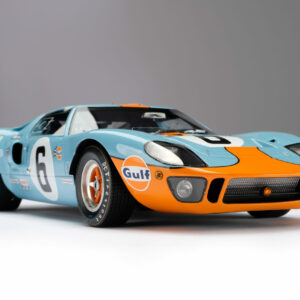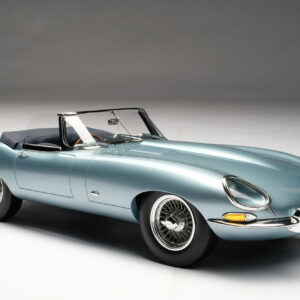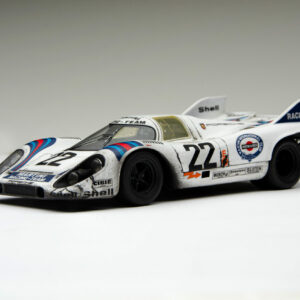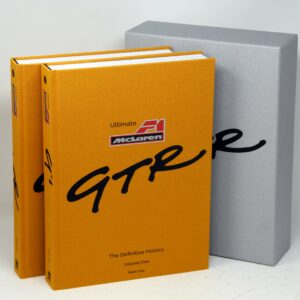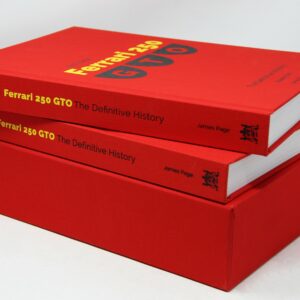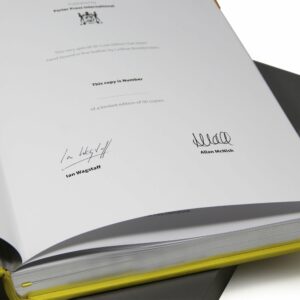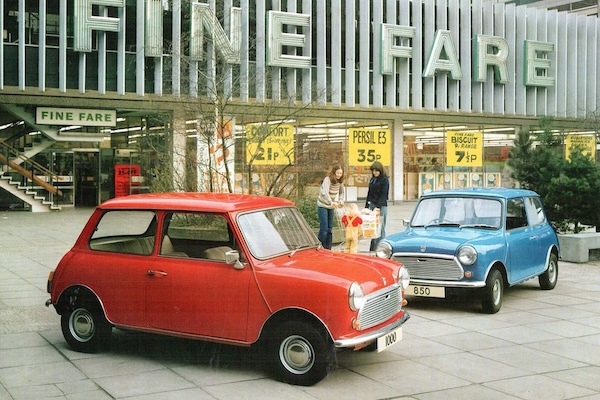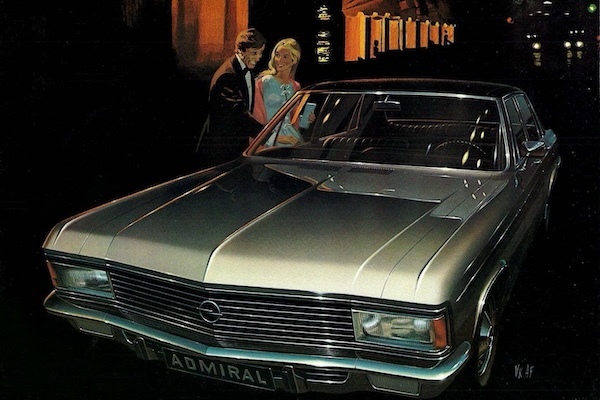Lamborghini Miura P400 SV | Edition in Giallo (Yellow) Car model
Amalgam Collection1 307 $
- 1:18 scale model, over 24 cms/9 inches long
- Available in Giallo, Arancia Miura or Verde Miura exterior paint schemes
- Each model hand-built and assembled by a small team of craftsmen
- Made using the finest quality materials
- Over 800 hours to develop the model
- Precisely engineered parts: castings, photo-etchings and CNC machined metal components
The Miura was the first sports car produced by Automobili Lamborghini and was, arguably, the first sports car the world had ever seen. When it was launched it was met with surprise and wonder by onlookers, resembling no other car in the history of motoring. Its iconic lines are due, in part, to the placement of the V12, 3,929cc engine with Weber twin-choke carburettors, which was mounted transversely behind the passenger cabin. Ultimately capable of 385 brake horsepower, the car was driven by a five-speed manual transmission and featured independent front and rear suspensions. Perhaps the most incredible thing about the Lamborghini Miura – and there are a lot of incredible things about the Miura – is that it was never supposed to happen. The car, named after Spain’s fiercest and most feared breed of fighting bull, started as the after-hours project of Ferruccio Lamborghini’s young technical director and his deputy, Giampaolo Dallara and Giampaolo Stanzani.
Lamborghini had already transitioned from a successful tractor maker to sports car maker, renowned for his brilliant mechanical mind and obsession with excellence. This was a man who once told Enzo Ferrari that his cars had clutch issues and that he had a solution. Enzo told him to continue producing tractors and not to worry about Ferrari. Instead, Lamborghini built the 350 GTV, a front-engine, rear-wheel drive two-seater that quickly rose to prominence in Italy. The GTV’s success got Dallara and Stanzani to dream, taking inspiration from racing icons like the Ford GT and the Ferrari 250 Le Mans to imagine their own mid-engine machine. The trouble was Lamborghini was interested in perfecting GT cars, not in racing misadventures. They didn’t dare advance beyond drawings and plans. Finally, one night in early 1965, they worked up the courage to show their boss their brainchild. To their surprise, Ferruccio was impressed, and gave their pipe dream the green light. The resulting prototype chassis was called the P400 and featured a transversely mounted four litre V12 engine. The engine, gearbox, and differential were all built as one unit, using the same lubrication for all three major parts. This design was ludicrously complex, but it was the only way to make the packaging work and maintain a low profile.
The P400 was unveiled as a bare chassis at the 1965 Turin Motor Show. The next step was bodywork. Ferruccio commissioned legendary coachbuilder Nuccio Bertone and his young mastermind, twenty-five-year-old Marcello Gandini, to make the P400 look beautiful. Gandini worked feverishly throughout the 1965/1966 winter to get the lines just right. Timing was tight; the first Miura was finished and loaded onto a hauler destined for Geneva just one day before the show. The car was, almost overnight, the must-have item in any well-to-do’s garage. Originally slated as a limited-run car, the sheer number of orders flooding into Sant’ Agata compelled Lamborghini to build over a hundred Miuras in the first year alone. The Miura S, unveiled in 1968, featured more power, (370hp up from 350) upgraded brakes, and a slightly higher top speed of 280kph (174mph).
The final production Miura, known as the Miura SV, was introduced in 1971. The SV’s most notable change was that the engine and gearbox were now separate. In addition, there were a few aesthetic changes, including the introduction of larger tyres, especially on the rear, and the engine’s power increased to 385hp @ 7850rpm. It debuted alongside the Countach concept, which would become the Miura’s successor just a year later. Though the Miura was not Lamborghini’s first car, it was the first in what would become the Lamborghini mould: big, loud engines mounted behind the driver powering breathtakingly styled coupes. Ferruccio may have said it best: “The Miura was like a magnificent mistress to me. Uncomfortable, very expensive, but unforgettable.”
These perfect 1:8 scale models of the Lamborghini Miura P400 SV, available in Giallo, Verde Miura and Arancio Miura exterior paint scheme, have been handcrafted and finished in our workshops with the co-operation and assistance of Lamborghini regarding original finishes, materials, archive imagery and drawings. The use of supremely accurate digital scanning of the original car has allowed us to perfectly recreate every detail at scale. Furthermore, it has undergone detailed scrutiny by both engineering and design teams to ensure complete accuracy of representation. Every Amalgam 1:8 scale model is supplied in a luxury black presentation box and mounted on a carbon fibre or leather base protected by a clear acrylic dust cover. The model title, original branding and edition number are displayed on polished stainless-steel plaques mounted at the front end of the base.
Note: This is a ‘Kerbside’ model and does not feature any moving parts.
Please note that certain links on this website are affiliate links. If you click on an affiliate link and make a purchase, we may earn a commission.
